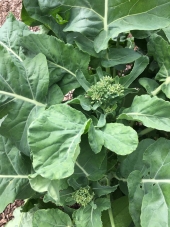You can root them. I have been experimenting with various brassicas and you can always find a few that make it through the winter even in a common seed source. I think it might be luck much of the time. The people who use food plots have produced a few hardy brassicas and some are available. But normally they are selected to remain green and vigorous into December. Some kales do not do that and the stems turn a light brown and the whole thing turns to mush.
About a decade or more ago, I started growing nine star perennial broccoli. It was nice and it worked in the polyhouses but not outside. I finally gave up. It consistently failed outside. But in the process of survival of the fittest, I did find some other open pollinated brassicas able to reliably make it below the 0 F mark. Ironically they also have the hardest stems too and are kind of woody in nature. (The stems, not the foliage.) What I wanted to say is you can root them pretty easy. Leave at least 3 eyes. After cutting, let them dry a bit and then stick them in a sandy peat moss. We have tried rotting compounds but I am not sure if that is any better than nothing. For us rooting was very high about 75 percent success in the spring. Some people recommend cuttings that are around 6 inches long. Basically the root of the brassica does not really sprout from below the ground so you need a hard woody stem with a rather good tolerance to cold. I think snow might be a good insulator and that may give you the luck you need to succeed with the so called hardy brassica.




